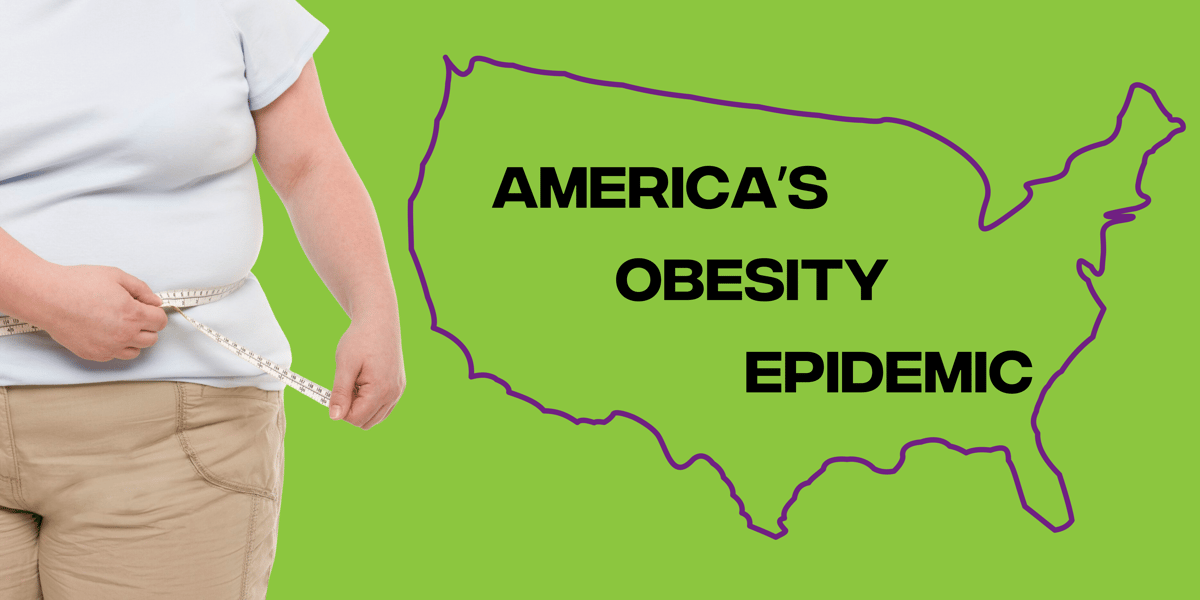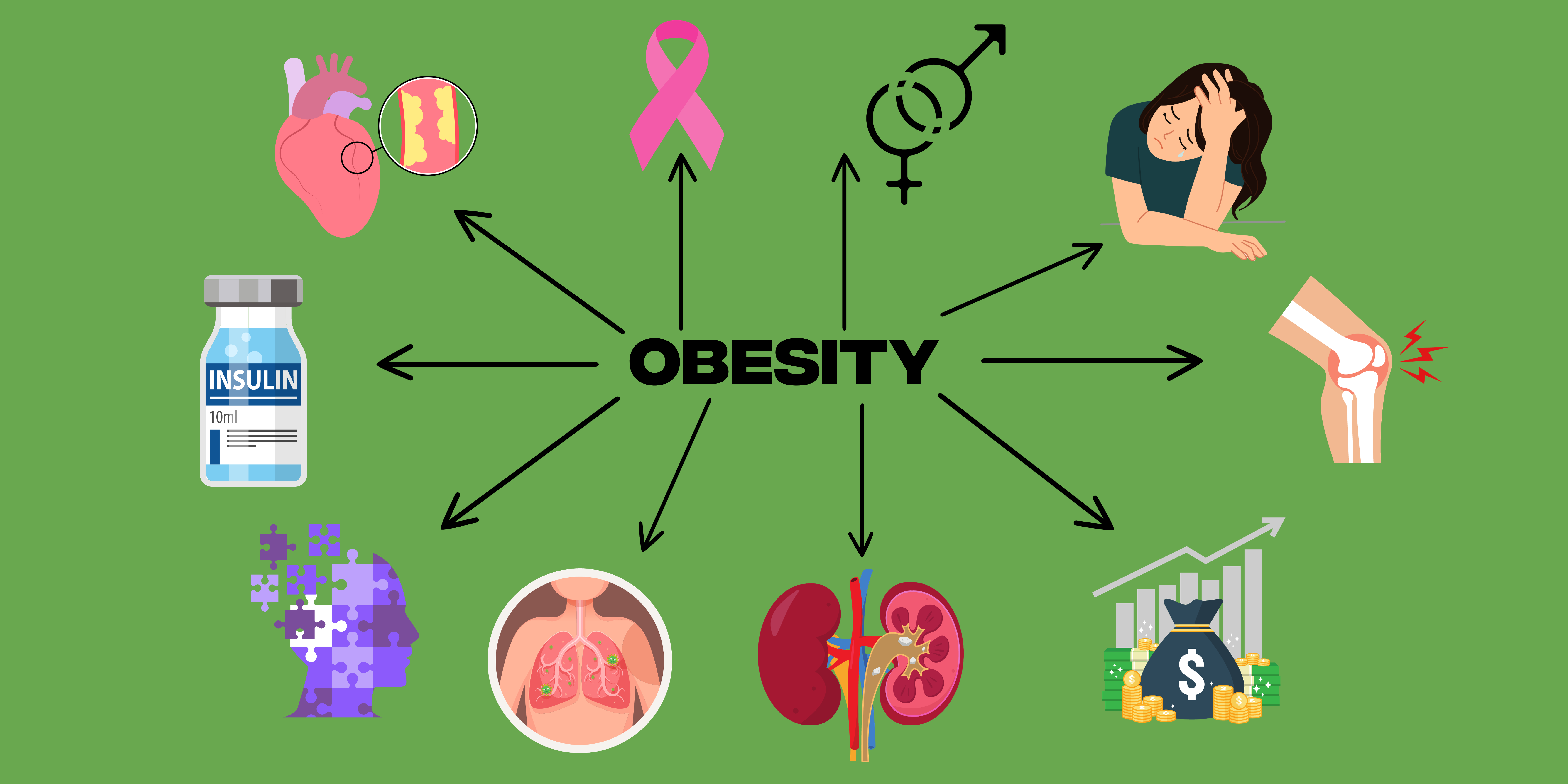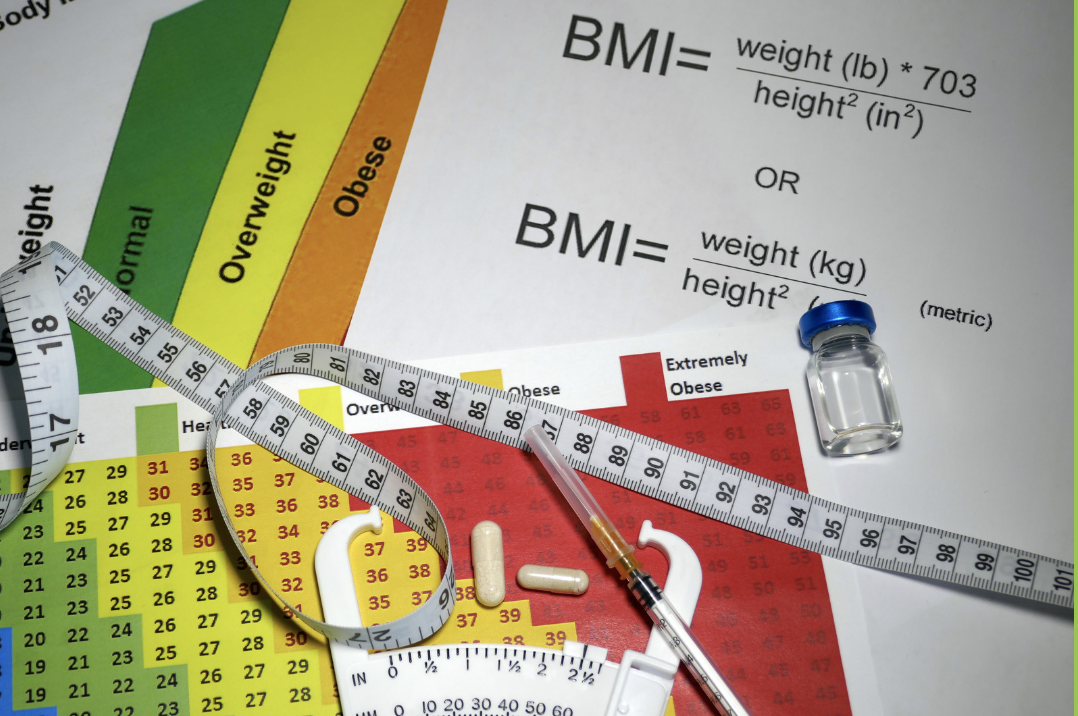Obesity can be defined as having a body mass index (BMI) of 30 or greater, whereas a BMI of 40 or greater characterizes severe obesity. The prevalence of obesity among adults in the United States is increasing at an alarming rate.
As of 2021, 71 million individuals, accounting for one-third of the U.S. population, were obese.[1] Obesity is a national epidemic and a severe public health concern as it contributes to high mortality and disability rates.
Comprehensive solutions are necessary to curb the epidemic and prevent weight gain from further devastating the U.S.[2]

Trends in Adult Obesity
The prevalence of adult obesity in the United States increased from 30.5 % in 1999-2000 up to 41.9% through 2020. During the same period, severe obesity prevalence increased from 4.7% to 9.2%.[3]
Analyzing data by gender reveals that more than one-third of men (34.1%) and more than one-fourth of women (27.5%) are overweight in the U.S. However, severe obesity is higher among women at 11.5% compared to men at 6.9%.[4]
Racial and ethnic disparities in adult obesity rates also persist. Although the majority of individuals impacted by obesity are white, the rates of obesity among racial and ethnic minorities are higher.
Obesity rates for Black (43%), Native Hawaiian or Other Pacific Islander (43%), American Indian or Alaska Native (39%), and Hispanic (37%) are higher than the obesity rate for White adults at 32%. Asian adults had the lowest obesity rate at 12%.[1]
-Oct-27-2023-03-18-51-0151-AM.png?width=1200&height=600&name=Untitled%20design%20(1)-Oct-27-2023-03-18-51-0151-AM.png)
Causes of Adult Obesity
There are a variety of factors that contribute to weight gain and the prevalence of obesity. These include both individual behaviors and environmental risk factors.
-
Lack of Physical Activity
Adults require an average of 150 minutes of aerobic exercise weekly. Furthermore, adults are encouraged to complete two days a week of muscle-strengthening activities. However, the inability to complete required physical exercise is associated with high BMI.
The inability of many adults to meet physical exercise requirements can contribute to sedentary behavior due to increasing screen time from activities such as watching T.V. and playing video games.[5] -
Unhealthy Eating Habits
Adults have varying calorie requirements based on sex, age, and physical activity levels. Consuming more calories than required can contribute to weight gain.
Eating excess foods high in saturated fats and added sugar can contribute to obesity. The amount of saturated fats and added sugar consumed should be at most 10% of total calories.[5] -
Poor Sleep Schedule
Studies have shown that sleep deprivation and poor-quality sleep are associated with high BMI. This is because lack of sleep affects the hormones that control hunger urges. Therefore, not getting enough sleep can result in overeating.[5] -
High Levels of Stress
Both long-term and short-term stress can signal the body to produce hormones such as cortisol that increase hunger urges and promote fat storage.[5] -
Health Conditions
Certain diseases like metabolic syndrome and polycystic ovary syndrome (PCOS) are associated with weight gain. These conditions require treatment to bring weight within a normal range.[5] -
Genetics
Certain individuals are genetically predisposed to obesity. Studies have characterized 15 genes associated with obesity.[5] -
Medications
Certain medications can result in weight gain as they disrupt chemical signaling within the brain that triggers hunger. These medications include antidepressants, oral contraceptives, and insulin.[5] -
Environmental Factors
The environment in which individuals live can profoundly impact their physical health.[5]
-Oct-27-2023-04-13-29-1834-AM.png?width=1200&height=600&name=Untitled%20design%20(1)-Oct-27-2023-04-13-29-1834-AM.png)
The Impact of Adult Obesity
The health consequences of obesity are severe. Individuals struggling with obesity are at increasing risk for numerous deadly and debilitating health conditions that include:
-
Type 2 Diabetes
Excess fat cells promote inflammation in the body. This makes the body less responsive to insulin, leading to high blood sugar and, eventually, diabetes.
Men who are obese are seven times more likely to develop type 2 diabetes, and women who are obese are twelve times more likely to develop type 2 diabetes.
Studies have shown that weight loss can prevent or delay the onset of type 2 diabetes for high-risk individuals.[6] -
Cardiovascular Disease
Increases in BMI are associated with high blood pressure and high cholesterol, which results in increased risk for coronary heart disease, stroke, and cardiovascular death.
Overweight individuals have a 32% higher risk of developing coronary artery disease. Furthermore, obesity increased the risk of stroke by 64%. Studies revealed that obese women are at 62% higher risk of dying early from heart disease.[6] -
Cancer
Studies have shown substantial evidence for the association between obesity and pancreatic, colon, breast, endometrium, and kidney cancers.[6] -
Depression and Quality of Life
Studies have shown that obese individuals are more likely to suffer from depression and poor quality of life.[6] -
Reproduction
Obesity can impact sexual activity and fertility. Obesity accounts for 25% of infertility in the U.S. During pregnancy, obesity can cause miscarriage, gestational diabetes, preeclampsia, and complications during labor.
Obesity also affects male fertility as it is associated with low sperm count. High BMI also increases the risk of developing erectile dysfunction.[6] -
Respiratory Disease
Obesity is associated with developing breathing problems, including asthma and sleep apnea. Obesity increases asthma risk by 50%, whereas 50-75% of individuals suffering from sleep apnea are obese.[6] -
Cognitive Function
Obesity is associated with a 42% higher risk of developing Alzheimer’s Disease.[6] -
Musculoskeletal Disorders
Excess weight results in increasing strain on bones, muscles, and joints. Obesity is correlated with a high risk of developing arthritis, back pain, and disability. One-third of joint replacement surgeries are performed on obese individuals.[6] -
Other Health Conditions
Obesity increases the risk of developing gallstones, chronic kidney disease, and fatty liver disease.[6]
Overall, obesity is an expensive disease. In 2019 alone, obesity cost the United States $173 billion. Medical costs for obese adults are $1,861 higher than that of a healthy adult.[3]

Socioeconomic and Environmental Factors
According to the U.S. Department of Agriculture, 9.7% of the U.S. population lives in low-income areas.
These areas are classified by being more than one mile away from a supermarket, forcing residents to purchase food from convenience stores, liquor stores, gas stations, and fast-food restaurants.
A study that analyzed adults in the United States found that low-income families are at significantly higher risk of being obese. [7] Areas lacking access to healthy foods, including fresh produce, are referred to as food deserts.
Surveys of individuals living in these underserved areas revealed that residents have sufficient knowledge of healthy foods but face financial-related barriers as accessing these foods is associated with a high price tag.[8]
Obesity disproportionately affects Black, Indigenous, and People of Color (BIPOC) due to rampant structural racism within the U.S. healthcare system and local communities.
Black adults are less likely to receive an obesity diagnosis compared to their White counterparts. This medical negligence prevents disadvantaged individuals from accessing adequate treatment for obesity and its comorbidities.
BIPOC individuals are exposed to chronic stress due to the racism they endure. Stress is a risk factor for obesity and increases its severity. The majority of BIPOC individuals who are obese struggle to access care that would help them lose weight.
The majority of food deserts, which are densely populated by fast-food restaurants and convenience stores, are inhabited by BIPOC minorities. For these marginalized communities, highly processed food is not only easily accessible but also more affordable.
This is primarily due to government subsidies for industrial food processing companies. BIPOC individuals are forced to purchase cheap alternatives, and historical practices of redlining and residential segregation have perpetuated this behavior.[11]
Solutions and Prevention
The onset of the obesity epidemic was not sudden, as it slowly worsened with every subsequent year.
Preventing obesity requires the adoption of healthy behaviors. These include limiting the intake of unhealthy foods, including processed meat, sugary drinks, refined grains, and sweets.
Adopting a daily physical activity routine that meets physical exercise requirements for adults is also essential. This involves limiting sedentary behavior and screen time. Furthermore, obesity prevention involves improving sleep quality and minimizing stress.[9]
Sustainable Development Goals (SDGs) are a set of 17 goals published by the United Nations to achieve a healthier and sustainable future for all. Goal 3 involves reducing premature mortality from noncommunicable diseases through prevention and treatment. Goal 16 involves reducing inequalities and addressing discrimination.
To progress towards achieving the SDGs, the U.S. must enact cost-effective strategies to address the obesity epidemic and structural racism.[10]
These policies include taxing sugar-sweetened beverages, eliminating tax subsidies for T.V. advertisements marketing unhealthy foods, education reform focusing on healthy behaviors and physical activity, and mandating physical exercise classes within schools.
All these policies have been proven more cost-effective than clinical interventions for obesity.[12]
Systematic inequalities faced by minorities living in food deserts can be addressed through policies that incentivize supermarkets and farmer's markets to open in these areas while banning fast-food restaurants from operating within particular zones.[13]

The adult obesity epidemic has taken a massive toll on the United States healthcare system and its economy by negatively impacting its population's overall health and productivity.
The alarming statistics and health consequences of obesity serve as a reminder for urgent action to address this public health crisis.
A comprehensive public health approach incorporating education, policy reform, and community engagement is crucial to ending the obesity epidemic.
Choosing a healthy plant-based and vegan diet is most beneficial when it comes to:
-
Higher levels of energy;
-
Improved sleep;
-
 Aids in energy and overall happiness;
Aids in energy and overall happiness; -
Provides a sense of comfort and relief;
-
Could prevent major diseases such as obesity and diabetes;
-
Accomplish weight-loss and management; and
-
Improves mental and cognitive functioning.
There are really no excuses not to try healthier habits in your everyday life. If you are a man or woman looking for specific benefits of adopting healthier habits or just want to know about the general healing properties of herbs. Please remember to comment or post any health questions, or contact us directly!
Also, feel free to share any of your favorite recipes to make and share it with the Assuaged community on our ➡️ Share A Recipe ⬅️ page!









-4.png?width=1200&height=600&name=Untitled%20design%20(1)-4.png)







